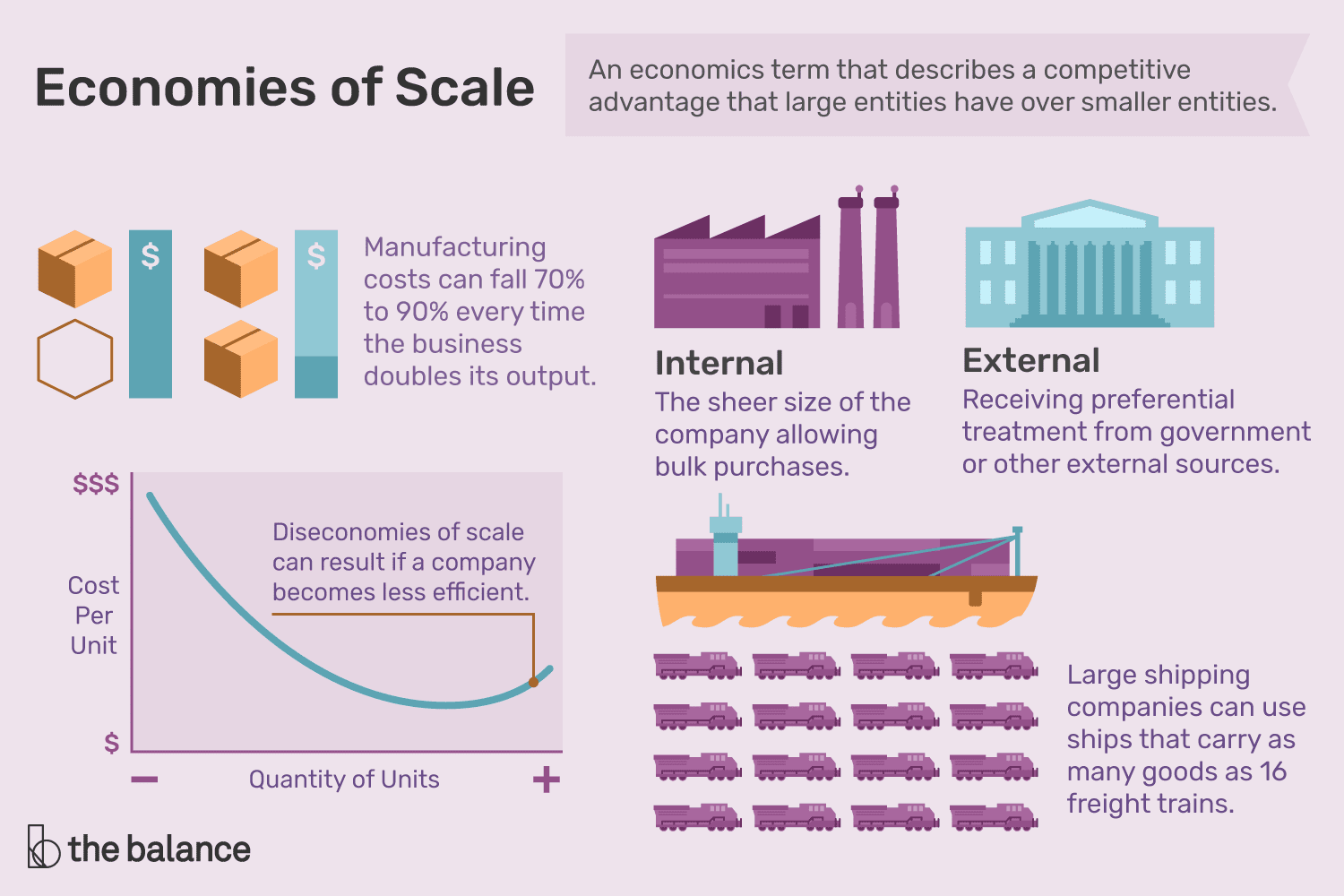The scale of economies is an important concept to understand when looking at the different levels of production and costs. It refers to how businesses can lower their costs by increasing their output, leading to increased efficiency in the production process.
This article will explain what the scale of economies are, how they are used, and examine some of the advantages and disadvantages associated with them. Additionally, it will look at some examples of how companies use scale economies to maximize profits or minimize costs.
Definition of SoE
The scale of economies (SoE) is an economic concept that refers to the cost-benefit associated with increasing the production scale. It is a measure of the total cost incurred by a firm in producing one unit, relative to its costs when producing multiple units. In other words, it shows how much cheaper it becomes for a business to produce more goods or services as its scale increases.
In terms of production output, SoE expresses how much more efficient and productive a larger-scale operation can be compared with a smaller-scale one. For example, if two firms each produce 100 widgets at different scales – one using fewer resources compared to the other – then the firm with the larger scale would be taking advantage of greater economies of scale than its smaller counterpart.
Types of SoE
The scale of economies (SoEs) is an economic concept that looks at the costs associated with producing a good or service. SoEs refer to the cost advantages that a business can achieve when it increases its size and scale of operations. There are several different types of SoEs, each with unique advantages and disadvantages related to production costs.
The first type is known as technical economies, which refers to the reduced cost that comes from using more efficient processes and production methods. Technical economies also allow businesses to produce higher-quality products in less time. The second type is called managerial economies; this refers to the reduced costs associated with increased management expertise and improved coordination between departments within a business. Finally, there are financial economies, which refer to reductions in financing costs due to improved borrower ratings or access to lower interest rates on loans.
Advantages of SoE
SoE offers many benefits and advantages for businesses looking to maximize their output while minimizing costs.
One major benefit associated with SoE is cost savings due to economies of scale. By increasing the size and scope of their production, companies can save money on materials and labor costs as well as have access to more resources in terms of technology and expertise. This helps them create products at a lower cost than smaller competitors, allowing them to be more competitive in the marketplace.
Another advantage offered by SoE is increased market share for companies that are able to produce at a lower cost than their competition.
Drawbacks of SoE
When it comes to businesses, the concept of the scale of economies (SoE) has been widely acknowledged as an important tool for developing efficient and cost-effective business strategies. However, there are some drawbacks that should be considered when using this model.
The main drawback of SoE is that it does not take into account external factors such as market forces, economic climates or political influence. These elements can have a huge impact on the success or failure of any business venture and cannot be accurately predicted using SoE models alone. Additionally, SoE does not factor in the costs associated with scaling up production in order to reach larger markets, which can become expensive over time and may outweigh any savings generated from increased efficiency.
Furthermore, SoE assumes a certain level of predictability when it comes to production processes and ignores potential risks associated with rapid expansion.
Conclusion
The concept of the scale of economies is integral to understanding the way a business operates. By looking at how production costs change as output increases, businesses can make smart decisions about their operations and maximize profitability. This article discussed the different types of scale economies, their importance to businesses, and how they impact economic growth.
In conclusion, it is clear that the scale of economies plays an essential role in any successful business model. Understanding this important concept allows companies to lower costs by increasing production volumes, making them more competitive and profitable in the long run. Businesses should take advantage of what this concept has to offer in order to remain competitive and grow economically. Additionally, governments should also consider implementing policies that help businesses benefit from economies of scale for larger economic growth possibilities.










Be First to Comment